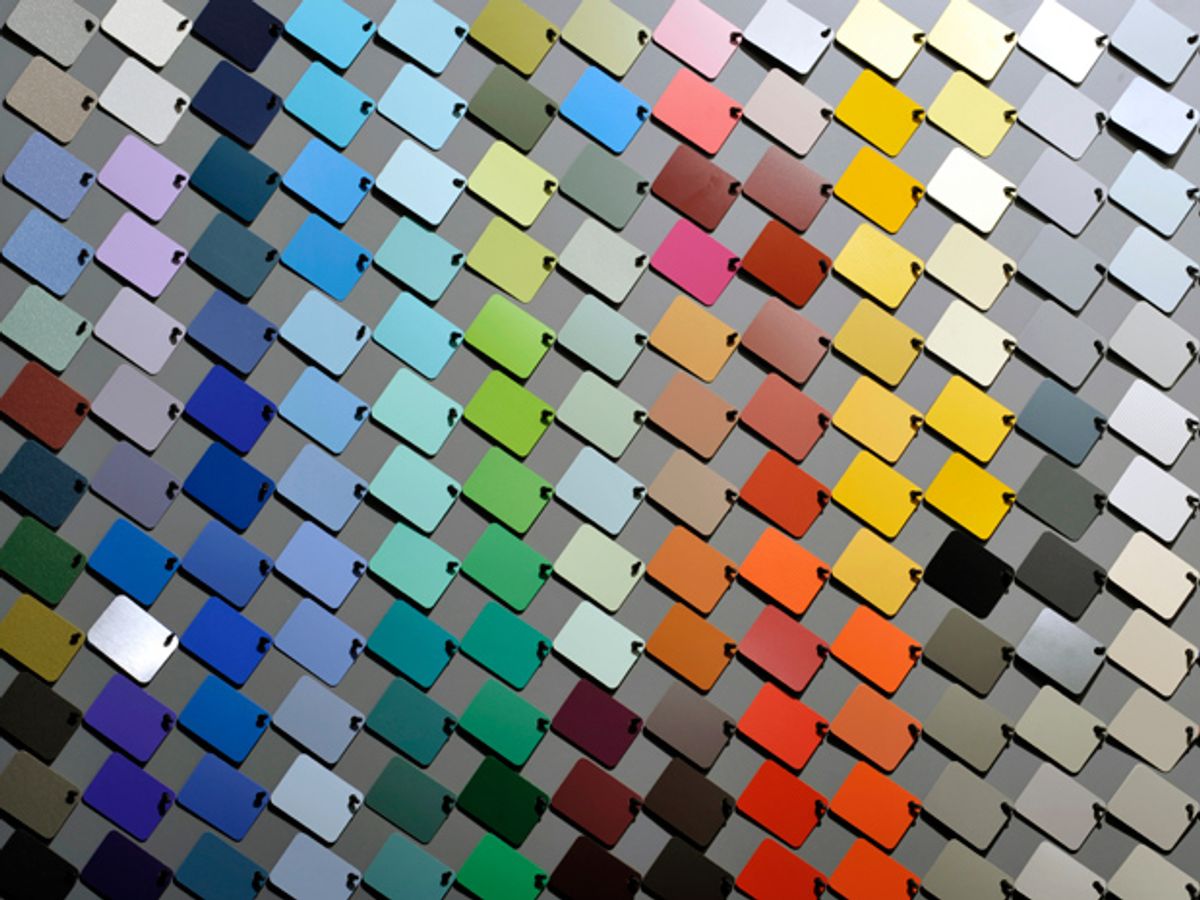Whether smartphone owners prefer metallic tones or brighter, eye-catching colors, there’s a good chance that AkzoNobel has it. The Dutch multinational company has become a leading player in designing device coatings for huge consumer electronics brands such as Samsung. Recently, AkzoNobel unveiled the 10th edition of its Design Trend report that analyzed past color trends and showed off new designs reflecting the dominant color trends for the next generation of devices.
Many consumer electronics still lean heavily on metallic colors. But bright, pastel and pale color tones have also begun to taken hold in the “season” for 2015 and 2016. A warmer range of pinks, reds and oranges has replaced some of the cool blues and greens of past years. The AkzoNobel design team chose a color of the year, named “smooth copper,” as a tone that could encapsulate or complement all the major color trends for the coming year. They presented their work in New York City on 20 May.

“This year we want to add something very surprising, warm and beautiful to the palette, because smooth copper is a very classic color,” said Kiki Tang, color and material finishes designer for specialty coatings at AkzoNobel. “It looks really nice by itself, and it also looks very nice and gives a strong touch when you pair it with the classic black and white, or even with different colors.”
Smooth copper falls under a glossy color theme that Tang and her colleagues named “refined iridescence.” That represents one of eight palette themes that represent the colors of the upcoming season.
The report also covered broader changes in color trends as well. Blacks and whites have begun giving way to a wider range of grays. Blues have shifted to darker, deeper tones that include shades such as an icy blue gray and indigo. Last year’s olive greens have also shifted toward a more muted look with pastel and gray tones. Yellows have taken on more neutral tones such as gold-toned oak and grayish brown.
The purple range has added punch pink and fuchsia in soft pastel pink. But darker purple tones have taken on intense shades of mauve, violet and wine. As for red, pastel skin tone and rich browns have become key colors. Other reds have a clear orange influence. Darker reds bleed into the purple range.
Smartphone buying habits in different parts of the world can also influence color preferences, Tang said. She pointed out how Asian consumers often buy new smartphones every six months. By comparison, people in the United States and European markets may hold onto their phone for a year or two.
“You might sometimes see in Asia they have more pop colors,” Tang said. “But in the U.S. they’re more conservative; they stick with a classic color because it lasts longer, it doesn’t really go out of trend.”
Despite the available range of colors, many consumer electronics still emphasize certain looks. The leading mobile phones and tablets tend to use neutral and metal colors that emphasize materials and textures. Laptops have shifted toward neutral-colored products with metallic surfaces and textures.
The feel of coatings for smartphones and other devices plays just as important a role in customer buying decisions as the color. One customer desire has consistently stood out above all other “They all want that soft, smooth, silky feel,” said Ted Rhee, sales director for CE Americas at AkzoNobel.
As a result, AkzoNobel has spent a lot of money developing a “soft” feel for the coatings on consumer electronics. Technology limitations meant that early “soft feel” coatings often stained easily and came in dull colors only. But more recent coatings created by the company come in a wider variety of bright colors and have stronger stain resistance. A separate product line for AkzoNobel has focused on creating a glossy or matte finish that can last for three or four years without wearing off, Rhee said.
New coating challenges have already arisen in the growing market for wearable devices such as smart watches and fitness or health monitors. The customer color preference in that market tends more toward whites, blacks, grays and silvers, Rhee explained. But AkzoNobel’s labs have been focusing on creating new coatings with better resistance to stains and water. They’ve also had to account for human skin sensitivity.
AkzoNobel provides specialty coatings for a wide variety of customers in other sectors such as buildings, industry and transportation. But the consumer electronics market presents a special challenge because of the need to understand a customer’s emotional relationship with their devices.
“We have all this technology to formulate coatings, to develop new colors,” said Alberto Slikta, managing director for specialty coatings at AkzoNobel. “Yet we are very, very close to the emotional attachment the consumer has with their phone. And that’s where the magic, the art of the design, comes from.”
Jeremy Hsu has been working as a science and technology journalist in New York City since 2008. He has written on subjects as diverse as supercomputing and wearable electronics for IEEE Spectrum. When he’s not trying to wrap his head around the latest quantum computing news for Spectrum, he also contributes to a variety of publications such as Scientific American, Discover, Popular Science, and others. He is a graduate of New York University’s Science, Health & Environmental Reporting Program.



